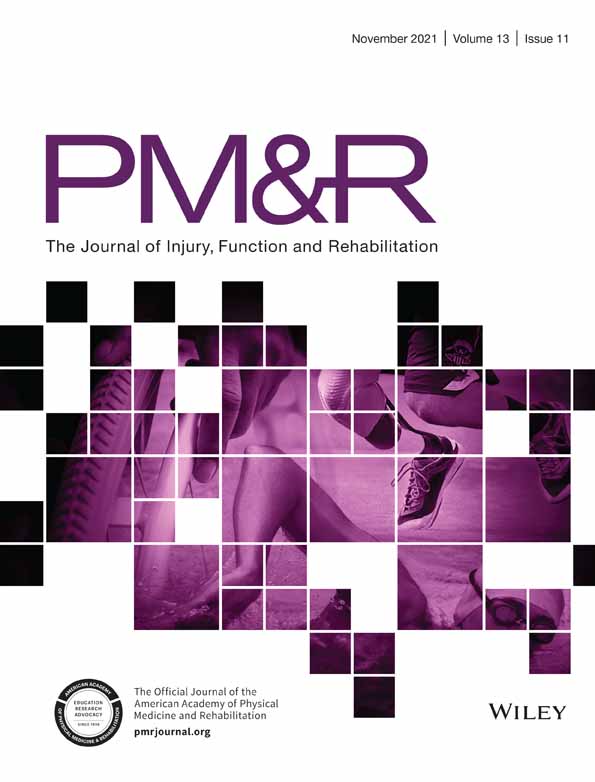Effects of an acute care brain injury medicine continuity consultation service on health care utilization and rehabilitation outcomes
Abstract
Introduction
Although general physiatry acute-care consultation services are commonplace and improve length of stay (LOS), the benefits of a subspecialty physiatric continuity consultation service targeting patients with severe brain injury have not been reported.
Objectives
Our primary objective was to characterize patient care recommendations from a Brain Injury Medicine (BIM) Continuity Consult Service, and to investigate the effects on acute-care LOS relative to brain injury patients receiving General Physical Medicine & Rehabilitation (PM&R) Consult Services. Our secondary objectives were to examine inpatient rehabilitation (IPR) health care utilization metrics and costs between groups and evaluate clinical improvements during IPR and discharge disposition.
Design
Retrospective cohort comparison study.
Setting
Academic medical center with level 1 trauma center.
Participants
Adults with severe brain injury admitted to a single-site acute-care facility and subsequently admitted to a single inpatient brain injury rehabilitation unit over the same time period.
Physiatric Care Models
BIM Continuity Consult Service versus General PM&R Consult Service.
Main Outcome Measures
Acute-care LOS; unplanned discharges to acute-care.
Results
Despite no major demographic or clinical group differences, the BIM Consult Service had more patient comorbidities than General PM&R Consult Service (17.5±5.3 versus 16±5.1;P = .04). BIM Consult Service patients spent fewer days in acute care (30±11.8 versus 36±22.8; P = .008), and early BIM consult (≤7 days after admission) was associated with shorter acute-care LOS (P < .002). IPR LOS was similar between groups when considering unplanned transfers. Unplanned transfers among General PM&R Consult Service patients occurred twice as frequently as in BIM Consult Service patients; average readmission costs were $2778 per patient on the BIM Consult Service and $6702 per patient on the General PM&R Consult Service. More BIM Consult Service (85.7%) than General PM&R Consult Service (27.3%) patients emerged from disorders of consciousness during IPR (P = .02).
Conclusions
BIM Continuity Consultation Services were associated with shorter acute-care LOS, fewer unplanned acute-care transfers, and an increased likelihood of emerging from a minimally conscious state during IPR.




